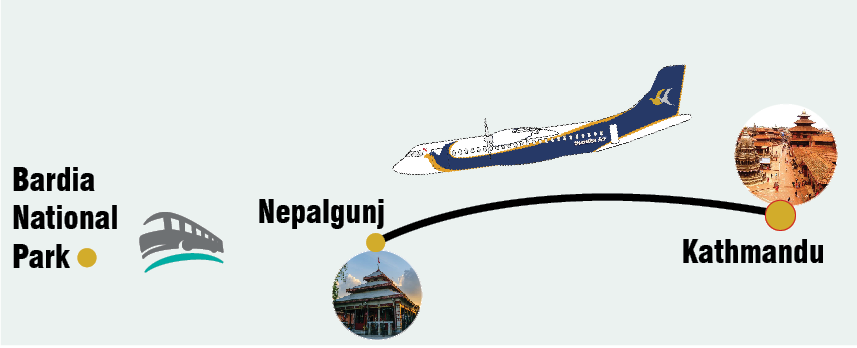BARDIA: Nepal's Tigerland and Cultural Corner

We're midway through 2019 and Bardia has already received an award and a mention from reputable organizations. The world's leading travel trade show, ITB Berlin awarded Bardia as the "Best Eco-Tourism Destination of Asia Pacific Region." This award was in recognition of the initiatives for sustainable tourism and excellent conservation efforts. The most recent mention is by Lonely Planet, a reputable and trusted guidebook that listed Bardia National Park as one of the best places to see the Bengal Tigers in their natural habitat. According to the article, there are only 3890 tigers living in the wild out of which, over 80 tigers live in Bardia alone.
"This news spread a positive message in the world, supporting the promotion of tourism in Nepal," commented Mr. Deepak Raj Joshi, CEO of Nepal Tourism Board.
Bardia National Park is best known as the home of the trinity of the big three mammals - Royal Bengal Tiger, One-horned rhino and the Asiatic elephant. The park is a shining model for a destination renowned for its wildlife, sustainable conservation and Tharu culture. In stark contrast of starting out as a hunting reserve for Nepal's royalty in 1968, Bardia is now receiving accolades for its preservation and conservation efforts. Since 1988, the park was rebranded as a national park in 1988. The park covers an area of 968 sq. km and its main objective is to preserve the wildlife that lives in the park.
The best season to watch the tigers is during the Nepali months of Falgun to Ashar. You will need at least 4 days to get the best out of what Bardia has in offer for you - from its wildlife adventures to cultural experiences. A budget of around NRs. 15,000 is sufficient for your Bardia adventure.
The national park has been visited by dignitaries and celebrities as well, keeping Bardia in the limelight in the foreign press as well. In 2010, actor and activist Leonardo DiCaprio had travelled to Bardia as a Goodwill Ambassador of WWF. On 21 March 2016, Prince Henry of Wales visited the park and rafted from Gainda Machan to Baghura, and even spent time at Dalla Homestay too. Mr. Alastair Driver, the Main Advisor of UK's Prime Minister and his team had visited Bardia for 9 nights recently.
Thakurdwara is the main entrance to Bardia National Park. Four new entrances were added in 2018 which are Ambasa (Amreni), Rambhapur, Chepang and Banjaria. All these entrances will take you to Bardia National Park. Besides providing convenience to travellers, the entrance has also led to establishments of new homestays and hotels.
The oldest entrance, Thakurdwara has 26 hotels and resorts, of which Dalla Community Homestay is located nearby. Homestays in Dalla have been established in 17 Falgun 2067 with the support of Terai Arc Landscape (TAL) project of WWF. According to Mr. Salikram Yogi, Secretary of Home Stay Management Committee, the income is good from tourism.
According to Mohanlal Chaudhary, Chairman of Eco-Tourism Development Forum, Thakurdwara has a capacity for 550 beds. Thakurdwara is enriched with tourism facilities as well, like major banks and ATM services, hotels and resorts offer free WiFi and restaurants serve Nepali, Chinese and Continental cuisines.
Hotels and resorts have already opened in Bhuriguan and Amreni. The process of building hotels have started at the Chepang entrance while homestays like Janakpur Community Homestay, Tharughar Home Stay are already established in Banjaria. Stakhaluwa Community Homestay is located near the Rambhapur Entrance. For those who want to visit Krishnasar Preservation Area, go to Yadav Homestay in Khairapur. Homestays are also available in Bansagadhi as well.
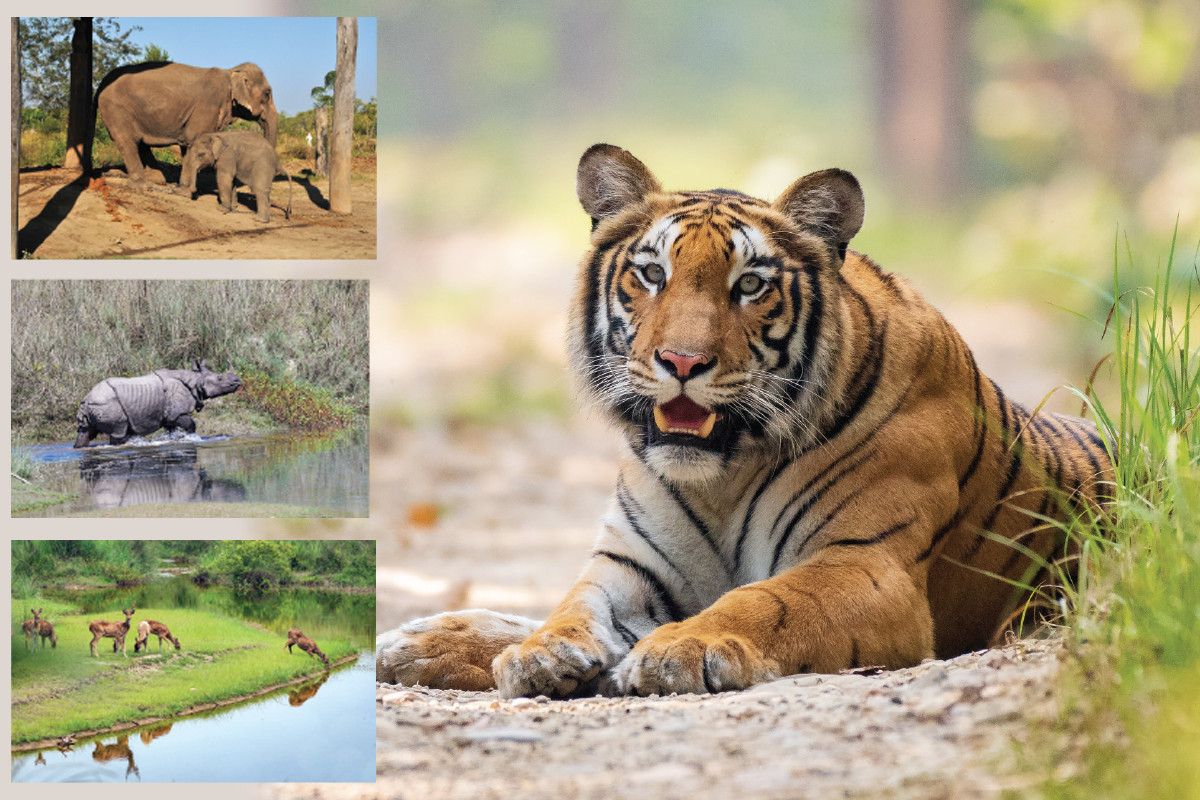
The Nepali year 2076 BS has been marked as "Visit Bardia Year" with the slogan, "Bardia for Tiger Watching." The slogan was chosen as the whole world is working towards doubling the tiger population by 2022 A.D. The good news is, the population has already doubled from 2016 to 2018.
What To Do At Bardia National Park?
Elephant Safari: Go deep into the jungles while you're perched high on an elephant. The elephant safari usually lasts up to 2 hours, which is ample enough to take a scenic tour of the park and its wildlife.
Jeep Safari: A jeep safari is the fastest and easiest way to explore the whole of the jungle of Bardia National Park.
Jeep safaris can be arranged as per your need. Half-day packages offer a 40 km tour of the jungle in 4 hours, while full day packages take a 70 km tour of the jungle in 8 hours.
Jungle Walk: A guided jungle walk is the best way to explore the park if you do not want the noise of the jeep to disturb the wildlife.
You can choose from half-day or full-day jungle walks. It is advisable to carry trekking cane, water bottles, cameras and binoculars when you opt for a jungle walk. For half day walks, you will need to pack breakfast, while for full-day walks, you will need to pack breakfast and lunch.
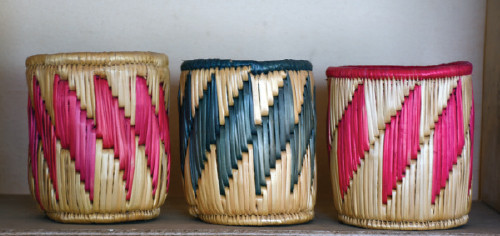
Rafting: Go for an aquatic adventure as you raft through either Karnali River or Gerua River. The rafting will amaze you with its beautiful jungle aesthetic and lowland scenery and encounters with aquatic and terrestrial beasts.
Full day packages are available from Chispani Bridge to Dualtpurghat and from Chisapani Bridge to Hattisar. Half day packages are available from Gainda Maichhan to Khauracross.
Crocodile Sightseeing: The Crocodile Breeding Centre is located at Thakurdwara, where breeding of Mugger crocodiles and Gharials are done. The centre was established in 1986. Alongside the breeding centre is a Tortoise Breeding Centre where 10 species of tortoises are bred.
Bird Watching : Keep your eyes peeled and your binoculars ready as you scour the trees to spot the beautiful birds of Bardia National Park. The park is home to over 500 species of birds like Black Stork, Lesser Florican, etc.
Museum Visit : To truly experience the lifestyle and understand the culture of the Tharu, a visit to the museum is a given. Located near Thakurdwara, you can find Tharu clothing, weapons, jewellery instruments, utensils, statues, etc.
Fishing : Besides rafting, Babai and Karnali rivers are also perfect fishing spots. Before you begin to fish, you must obtain permission from the park administration. Once you've caught the fish and taken a mandatory selfie, you have to release the caught fish back into the river.
Filming : The vast lowlands, dense jungles and the gentle rivers of Bardia National Park are perfect materials for you to film a nature documentary! Besides the beautiful natural environment, the wildlife and unique culture are sure to add a touch of magic to your film.
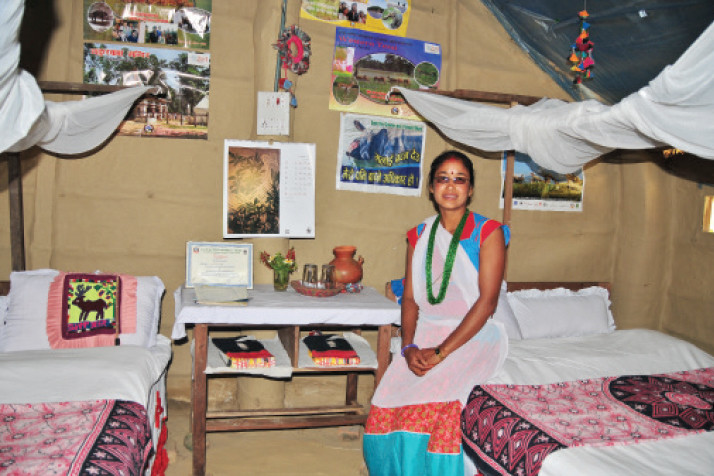
Village Tourism : The mid-central region of Bardia National Park is inhabited by the Tharus - an indigenous ethnic group of the southern foothills of Nepal. They are best known for their sense of community. A Tharu Village tour give you an authentic experience of living the life of a Tharu and some villages even offer homestay facilities.
Local cuisine : A big part of local culture and tradition is its cuisine! The cuisine of the Tharus offers many unique dishes like Anadi Rice, Barmuwa, Gunghi (edible snails) Dhikri (made from rice flour), etc. These dishes are known for their spicy and distinct flavours.

Thakurbaba Visit: There is also a temple located at Thakurdwara known as Thakurbara Temple. Thakurbaba is what the locals call Lord Vishnu. During Maghi festival, there is a huge celebration that takes place at the temple. Worshipping Thakurbaba is believed to fulfill wishes.
Camping: At Bardia National Park, there are permitted zones where you can camp. These areas are the Lalmati and Guthi regions where you can make a tent and spend the night. In the solace of night, you can take pleasure in listening to the calming sounds of birds chirping and movement of animals. But be warned, you are not permitted to travel outside the tent.
How To Reach Bardia National Park?
Take a direct flight from Kathmandu to Nepalgunj, and from Nepalgunj, it is about 2.30 hours drive towards Thakurdwara from Ambasa.
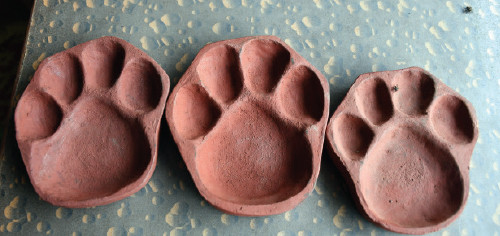
Purchasing Souvenirs
There is an array of handicraft items you can choose from to take as souvenirs of Bardia National Park. From baskets and pen holders to idols of elephants and rhinos. You can even buy Tharu dresses and pieces of jewelry as well.
Rising Stars
There are 4 dozen guides who are in active service in Bardia National Park. Among the many guides, Rajman Chaudhary and Deepak Rajbanshi are popular and sought after the most.
Rajman and Deepak are maternal uncle and nephew. Rajman is 41 years old and has been working as a nature guide for over 20 years. Deepak is only 24 years old and has 4 years of guide experience.
Whenever there is a dignitary or famous personality who visits Bardia National Park, Rajman is appointed as the tour guide, as he is experienced, a conservationist and also a social worker. He has been collecting foreign aid to build schools, provide scholarships, etc for his locality.
Under the mentorship and influence of his uncle, Deepak has also grown to be an experienced guide. Besides being a guide, Deepak has also taken up wildlife photography. He has a plan to organize a photo exhibition in Kathmandu to mark the "Visit Bardia Year 2076."
All the best to these rising stars!
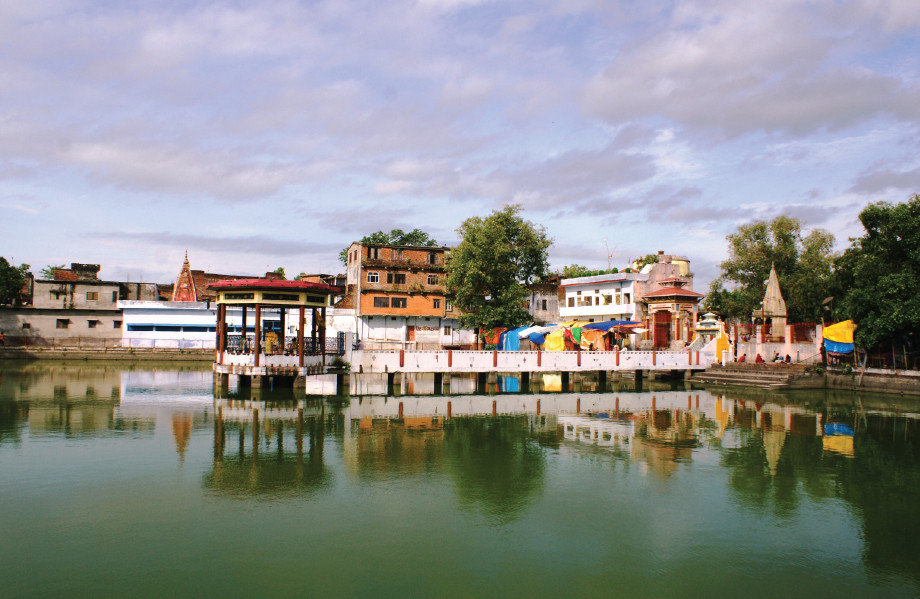
Nepalgunj: Economic Hub of Western Nepal
Nepalgunj is the one and only city throughout Nepal which is named after the country itself! The western economic hub, Nepalgunj is the district headquarter of Province 5. The city is culturally, linguistically and religiously diverse in nature.
The people of Nepalgunj live with a strong sense of brotherhood and mutual understanding. The urban populations are mostly Hindu, Muslim and Sikh, which means you will find temples, mosques and gurdwaras. During festivals of the respective religions, the whole city celebrates them with respect, whether they're celebrating Dashain, Eid or Baisakhi.
Nepalgunj is 16 km south from Kohalpur while travelling on the east-west highway. Nepalgunj Airport, also known as Ranjha Airport serves the city and is connected with daily flights between Kathmandu and Nepalgunj.
The roadway connects Kohalpur with Surkhet, Jajarkot, Kalikot and the Karnali province. Taking the Kailali - Chisapani route, you can reach all the districts of Sudurpaschim province. Nepalgunj is the entrance of Karnali and Sudurpaschim provinces.
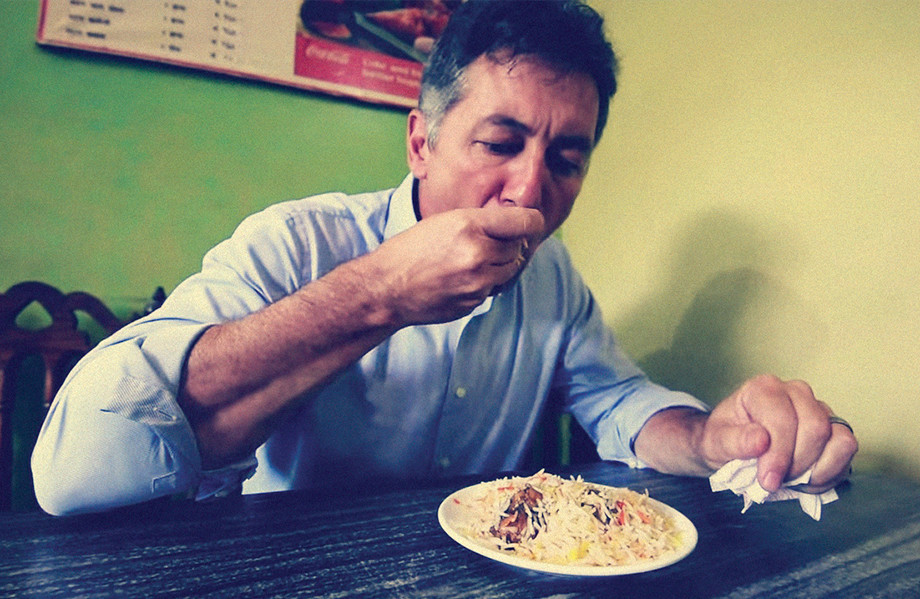
US Ambassador Randy Berry enjoying Nepalgunj 'biryani'
Mushaira, the poetic symposium of the Muslim community adds cultural richness to the city. And then there's the Bageshwori Temple, which is a wish-fulfilling Hindu temple. Inside the temple, you will find the unique statue of Lord Mahadev with a mustache! This unique mustachioed Mahadev cannot be found anywhere else in the country.
Nepalgunj is also connected to Rupaidiha checkpoint of the Nepal - India border. This is the entry point to go to Lucknow, a famous city in India. It takes up to 5 hours to reach Lucknow from Rupedia.
Nepalgunj is also the gateway to Mansarovar, a holy place in Tibet. Pilgrims can take their flights from Nepalgunj to Simikot and Humla. Even helicopter rides from Simikot to Hisla to reach the Tibetan border are available. Then, the pilgrims will need to travel via vehicle to reach Mansarovar.

